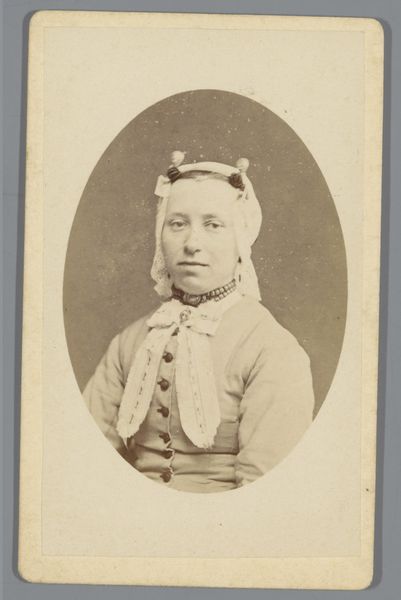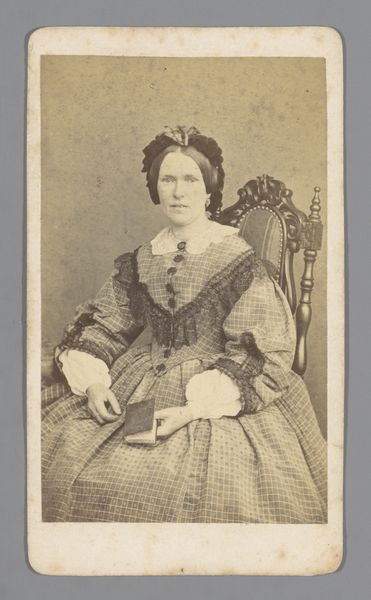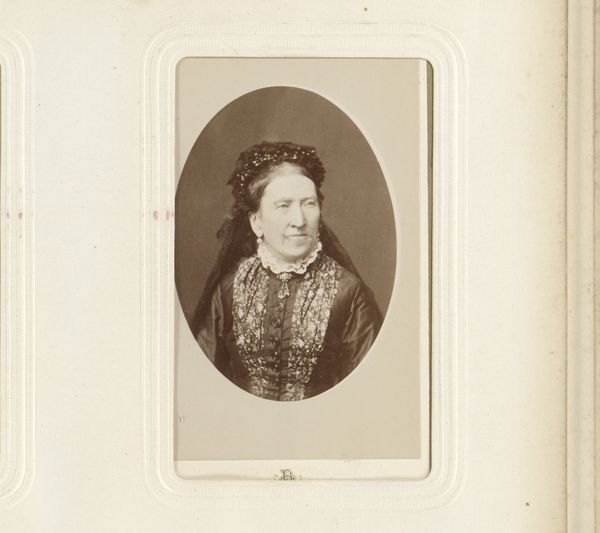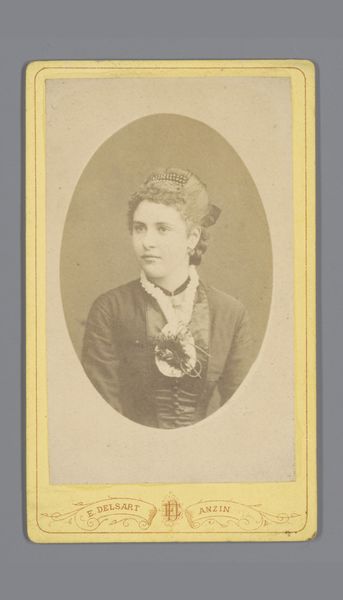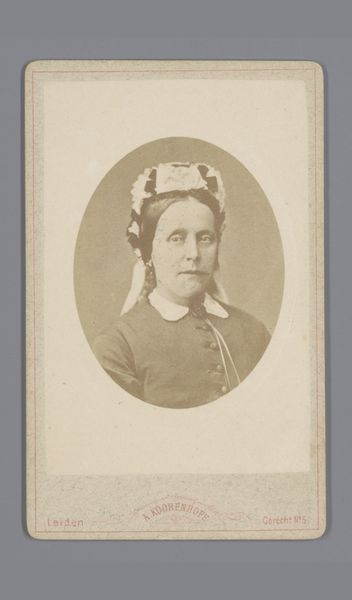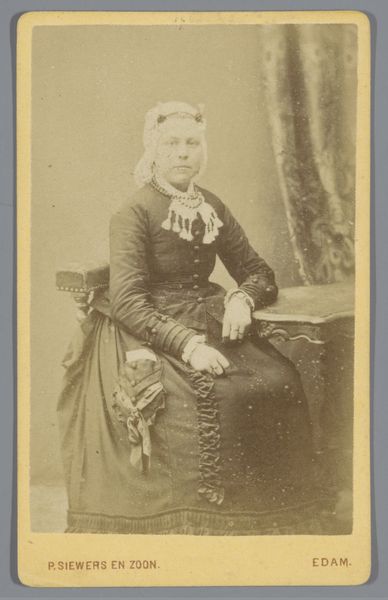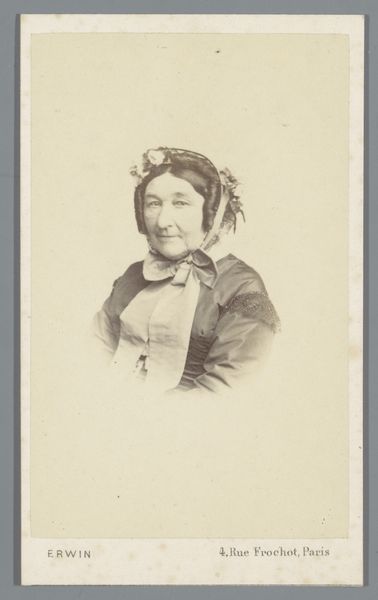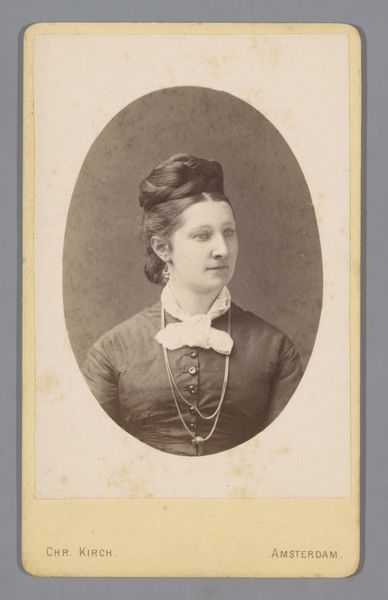
photography, gelatin-silver-print
#
portrait
#
photography
#
historical fashion
#
gelatin-silver-print
Dimensions: height 104 mm, width 64 mm
Copyright: Rijks Museum: Open Domain
Carel Eduard Westerborg, active in the Netherlands during the late 19th century, created this carte-de-visite portrait of an unknown woman. The small size and sepia tones were typical of photographs produced and collected as keepsakes during this period. But what does this image tell us about the sitter and the society in which she lived? The woman's elaborate bonnet, adorned with flowers and lace, suggests a certain social standing. While the sitter is unknown, the portrait itself speaks to the rise of a middle class in the Netherlands with the disposable income to commission such photographs. Westerborg, with his studio in Arnhem, was part of a growing industry that democratized portraiture, making it accessible to a wider segment of the population. Further research into Dutch social history, photographic archives, and studio records could reveal more about the sitter and her place in society. By examining such artifacts, we gain a deeper understanding of the cultural values and social structures of the time.
Comments
No comments
Be the first to comment and join the conversation on the ultimate creative platform.

